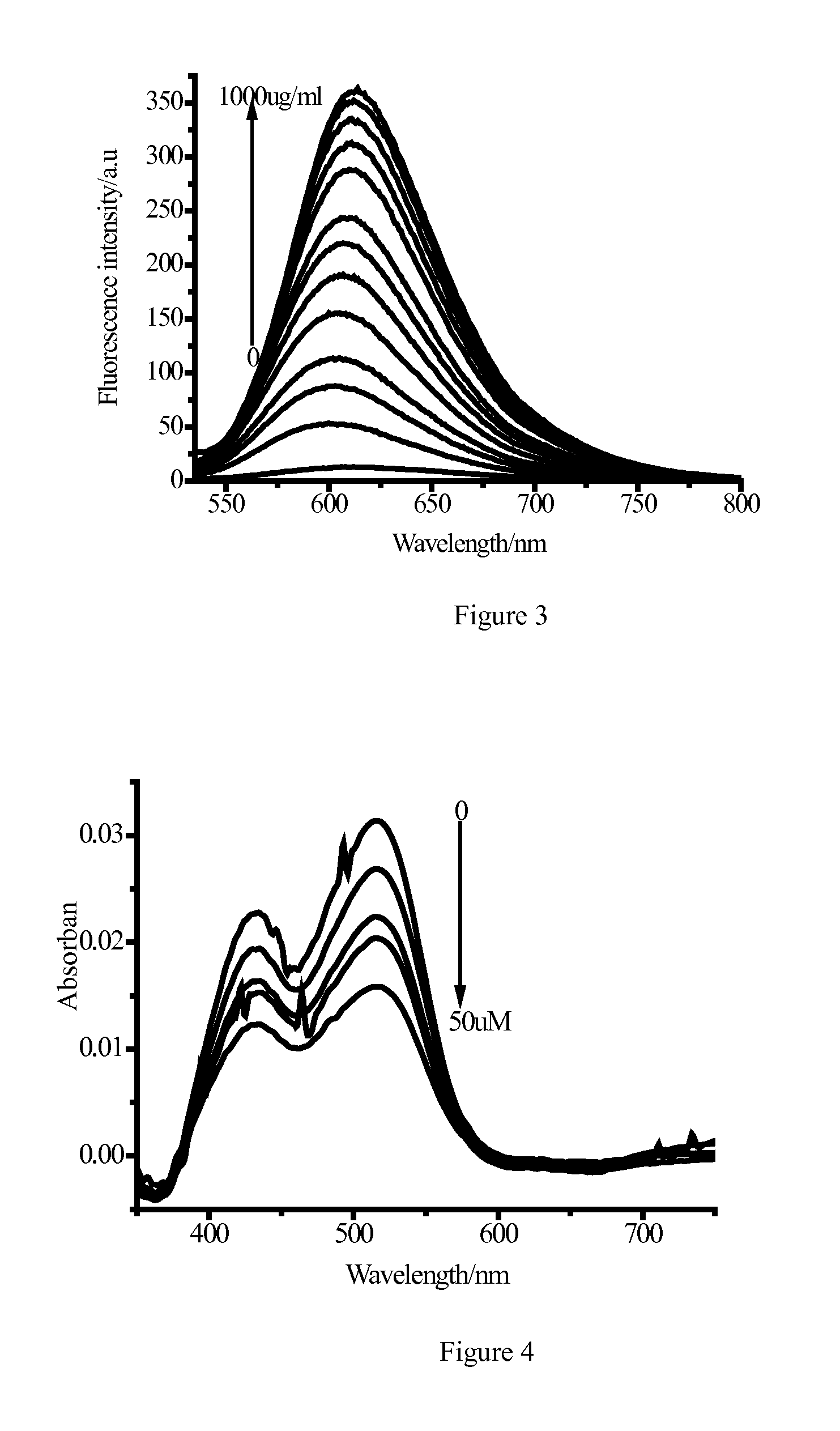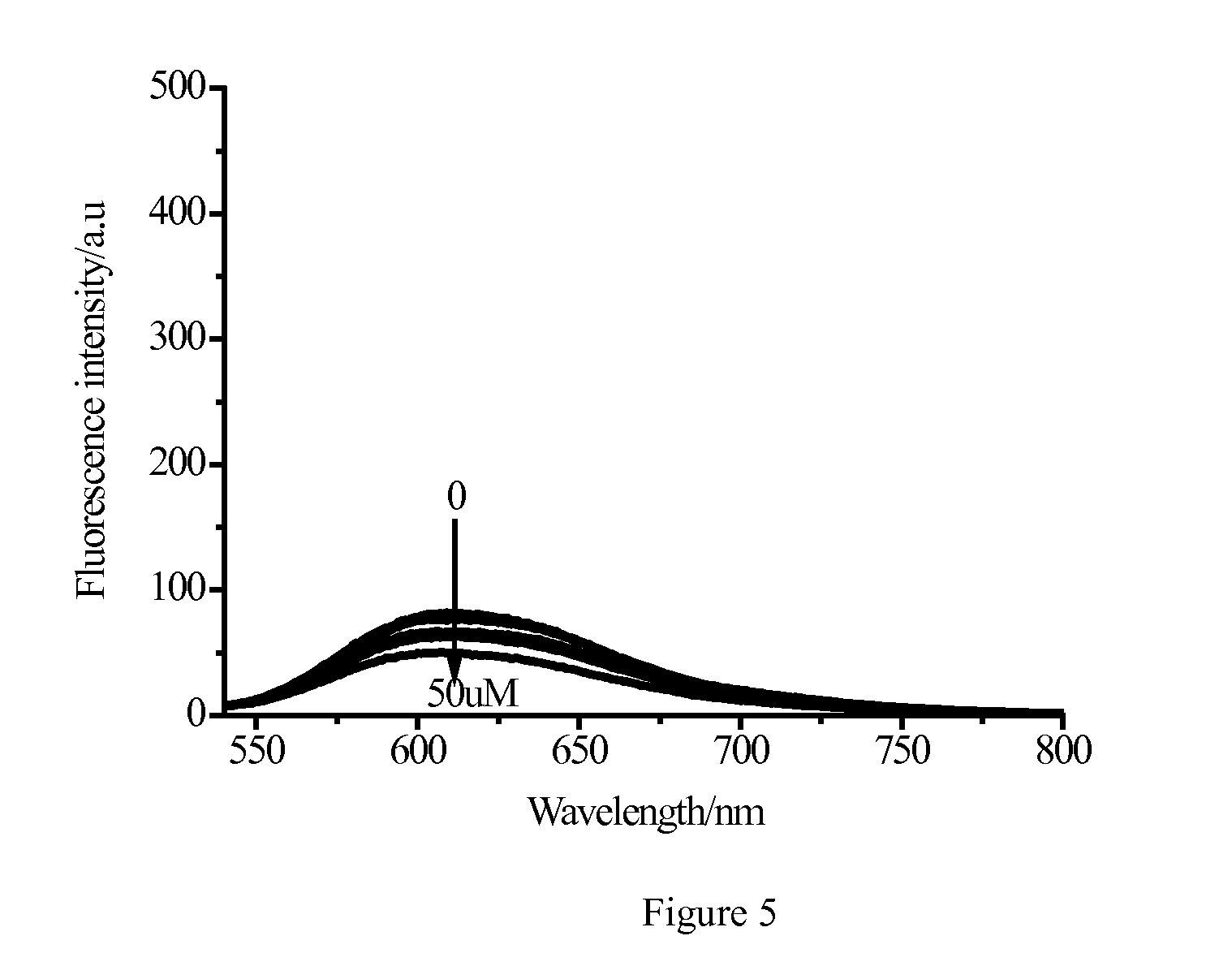Pentamethine Cyanine Fluorescent Dye with N-substituting at Beta-Position of Conjugated Chain
a technology of pentamethine cyanine and fluorescent dye, which is applied in the field of pentamethine cyanine fluorescent dye, can solve the problems of reducing detection sensitivity, scattering light of excitation light interferes with detection, and the fluorescence quantum yield of the dye is affected, so as to increase the fluorescence intensity, improve the fluorescence quality, and improve the effect of fluorescence quality
- Summary
- Abstract
- Description
- Claims
- Application Information
AI Technical Summary
Benefits of technology
Problems solved by technology
Method used
Image
Examples
example 1
[0035]Detailed synthesis route for intermediate was showed below.
Indole was synthesized by the Fisher indole synthesis method.
[0036]An amount of 54 g (0.5 mol) of phenylhydrazine was added into a 250 ml two-necked flask, and then 43 g (0.5 mol) of 3-methyl-2-butanone was added thereto dropwise under stirring. The obtained mixture was heated to 70-80° C. and reaction was carried out for 4h. The water layer was separated and the obtained water layer was extracted by diethyl ether. After combined with the diethyl ether layer, the organic phase was dried with anhydrous MgSO4. After filtration, the solvent was removed under reduced pressure. The crude hydrazone in an amount of 70 g was obtained in a yield of 80%. The obtained crude hydrazone in an amount of 70 g (0.4 mol) was mixed with 150 mL glacial acetic acid. The mixture was reacted for 4 h in an oil bath of 90° C. and then cooled down. The water layer was neutralized by an aqueous saturated Na2CO3 solution, and then water phase and...
example 2
Synthesis of Aimed Dye
[0055](8) Synthesis of Dye IIa
[0056]5 (0.425 g, 1 mmol) was dissolved in 10 ml anhydrous THF, and POCl3 (0.616 g, 4 mmol) was added thereto, then the solution was heated to reflux for 1 h under nitrogen protection until the solution turned into blue color from yellow color. The solution was cooled down to room temperature to obtain a THF solution of intermediate 6. Because 6 is very active, it was used directly for the next further treatment without being separated. After the solvent was removed under reduced pressure, 10 ml THF was added, and then a THF solution of ammonia was added under stirring until the obtained solution turned to orange color from blue color. The solvent was removed under reduced pressure. The residue was washed with water, extracted with CH2Cl2 and dried with anhydrous Na2SO4, and the solvent was removed under reduced pressure. Purification was carried out with silica gel column chromatography (CH2Cl2 / methanol 50:1 (v / v)) to give a red s...
example 3
[0060](9) Synthesis of Dye IIb
[0061]5 (0.425 g, 1 mmol) was dissolved in 10 ml anhydrous THF, and POCl3 (0.616 g, 4 mmol) was added thereto, then the solution was heated to reflux for 1 h under nitrogen protection until the solution turned into blue color from yellow color. The solution was cooled down to room temperature to obtain a THF solution of intermediate 6. After the solvent was removed under reduced pressure, 10 ml THF was added, and then a THF solution of ethanol amine (0.92 g, 15 mmol) was added under stirring until the obtained solution turned to orange color from blue color. The solvent was removed under reduced pressure. The residue was washed with water, extracted with CH2Cl2 and dried with anhydrous Na2SO4, and the solvent was removed under reduced pressure. Purification was carried out with silica gel column chromatography (CH2Cl2 / methanol 50:1 (v / v)) to give a red solid in an amount of 0.15 g in a yield of 36%.
[0062]1H-NMR (400 MHz, CDCl3): 1.07 (t, 3H, CH3, J=6.8 ...
PUM
| Property | Measurement | Unit |
|---|---|---|
| emission wavelengths | aaaaa | aaaaa |
| emission wavelengths | aaaaa | aaaaa |
| emission wavelength | aaaaa | aaaaa |
Abstract
Description
Claims
Application Information
 Login to View More
Login to View More - R&D
- Intellectual Property
- Life Sciences
- Materials
- Tech Scout
- Unparalleled Data Quality
- Higher Quality Content
- 60% Fewer Hallucinations
Browse by: Latest US Patents, China's latest patents, Technical Efficacy Thesaurus, Application Domain, Technology Topic, Popular Technical Reports.
© 2025 PatSnap. All rights reserved.Legal|Privacy policy|Modern Slavery Act Transparency Statement|Sitemap|About US| Contact US: help@patsnap.com



